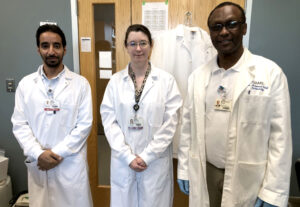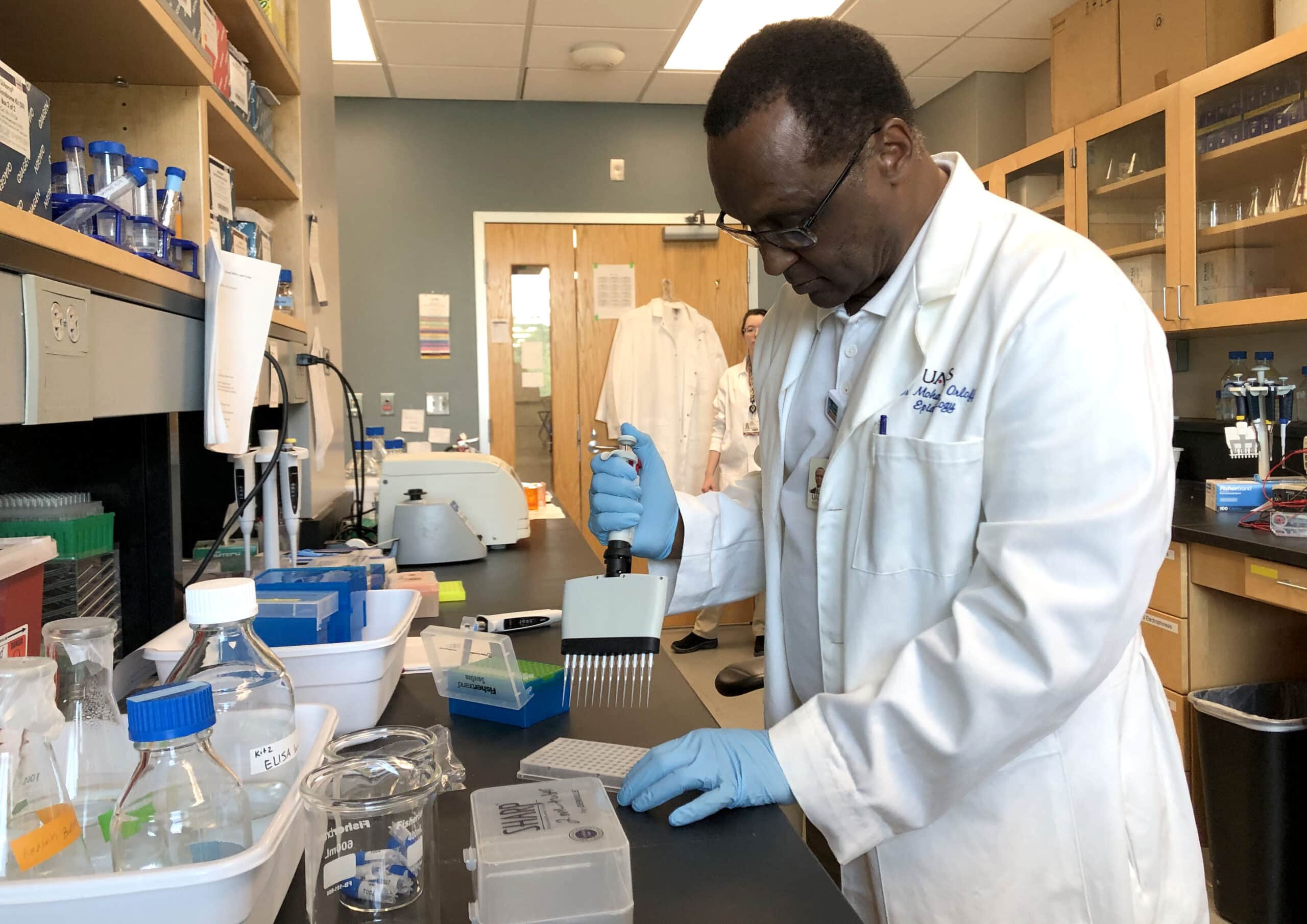Mohammed Orloff, Ph.D., Examines Microcystin Exposure in Lung Cancer Cases
| Mohammed Orloff, Ph.D., associate professor in the University of Arkansas for Medical Sciences (UAMS) Fay W. Boozman College of Public Health Department of Epidemiology, is leading a study examining how genetic and epigenetic factors and socio-environmental factors contribute to non-small cell lung cancer development for people in the state’s under-resourced regions.
Orloff’s project, “Identifying Distinct Non-Small Cell Lung Cancer Epigenetic Signatures Associated with Microcystin Exposure in Arkansas’ Underserved Areas,” launched in March and will continue through February 2025.
“Understanding the specific subtype of non-small cell lung cancer is crucial for accurate diagnosis and proper treatment planning,” Orloff said. “The prevalence of non-small cell lung cancer subtypes may vary across different geographical locations. Factors such as local smoking habits, environmental factors and genetic predisposition may contribute to the distribution of specific subtypes.
“Socioeconomic status, education and health care access are also among the key factors that influence epigenetic signatures,” he said. “Through using epigenetic signatures related to microcystin, we believe that it’s possible to detect and refine classification of non-small cell lung cancer subtypes and the potential severity of the disease in low-resourced areas.”

Mohammed Orloff, Ph.D., associate professor in the University of Arkansas for Medical Sciences Fay W. Boozman College of Public Health, stands with Heather Robeson and Maher Alsaadi – who are both assisting him with a non-small cell lung cancer study.
Microcystin can impair a person’s lung function by interfering with the respiratory cells’ normal duties. It induces immune system suppression and strong inflammatory responses. Microcystin infection can result in a person having wheezing issues, developing respiratory symptoms, breathing difficulties and prolonged exposure can lead to lung cancer.
Residents of low-resourced areas typically encounter microcystin in two ways:
- Through the air during blue-green algae blooms.
- In freshwater sources, particularly lakes, rivers and streams.
“Underserved areas lack proper infrastructure, making it difficult for residents to gain access to clean water, health care facilities and health education opportunities,” Orloff said. “That further exacerbates the impact of the environmental challenges that exist.
“Through our research, we hope to gain valuable insights into these problems the populations face.”
Identifying areas in need of environmental upgrades and promoting healthier communities is possible by studying the relationship between social structural factors and epigenetic signatures, according to Orloff.
He’s optimistic that presenting potential solutions to the issues can lead to new policies, development of targeted therapies and interventions for residents of Arkansas’ underserved regions.
“Identifying gaps in essential services, can help prioritize and allocate resources accordingly and build collaborations with a variety of stakeholders,” Orloff said. “Much of that collaborating is informing residents of the dangers and coming up with rational solutions to the issue.
“Microcystin exposure is preventable by monitoring water sources, warning the public about potential health risks and implementing appropriate water treatment and filtration,” he said. “Understanding the link between environmental challenges and the elevated risk of lung cancer in underserved communities is essential for implementing policies to address the issue.”
